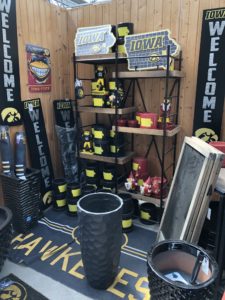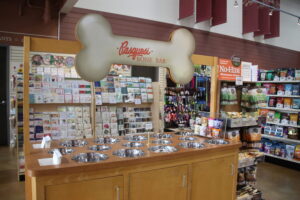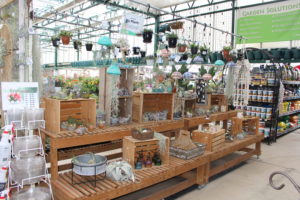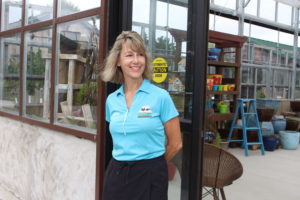Closed for Profit
Spring the sound of registers ringing, customers questioning and shopping carts rolling. And then there’s fall and winter for some of you the same sounds can be heard, but for others of you, there’s that horrible silence and lull. It used to be common to see garden centers close their doors after the fall or even summer season and open up again in time for spring. But these days bring more fall customers and winter/Christmas enthusiasts. And, more and more garden centers are bringing in Christmas trees, growing poinsettias, building a Christmas collectibles line, etc. Winter/Christmas has even become “peak” season for some.
But, what about those garden centers that still experience the silence and lull? What about those retailers who aren’t making as much money as what is being spent in that off season? What about the costs of employment, utilities, etc? For most of the industry the answer to this has been altered operating hours in the off-season, most often the fall/winter. But maybe the answer for some retailers is the old-fashioned way closing the doors. For some it works; for others it doesn’t a great thing about being an independent garden center is finding out which seasons are your best and then capitalizing on them.
So, how do you know if it’s a good business move for you? Many things factor into the crucial decision of closing your doors, and those factors require a lot of thought and analyzing.
Reputation
You all know what your store is known for. For some, it may be your seminars or customer service; for others it may be a certain product offering or an annual sale. There aren’t many garden centers out there that catch the attention of customers for everything the store offers. The reason you are well known for something in particular is because you do that Á “something” well. And now, you can’t eliminate it, because it’s a mainstay of your business. This is one of the main reasons Goebbert’s Farm & Garden Center, South Barrington, Ill., closes its doors on Halloween night and opens them back up around mid-April, depending on the weather. Goebbert’s has been well known throughout its community and miles beyond for its fall/Halloween season. It goes all out with hay rides, a petting zoo, a haunted house and many other “fall” activities. The store focuses so heavily on that event that there is no way it would be ready for a Christmas season.
“People would like us to do Christmas, but there’s just not enough time for us to turn around and do it, and being that [fall/Halloween] is our big season, I think it is appropriate for us to shut down at that point,” said Sue Murdock, a manager at Goebbert’s. “When we were looking at [staying open all year], we were looking at [garden centers] that were doing all four seasons, and none of them were doing Halloween the way we were… We just felt like if we tried to do [the fourth season], it would really take away from what we were doing in October because we’d be worried and focused on that making sure we got our next season up and running.”
We’ve all heard the phrase, if you’re gonna do it, do it right. This most definitely applies here. “We’ve tossed around doing Christmas, and we’d have to do it on such a small scale; but, people would expect us to do [it big] with sleigh rides and Santa and all of the kids things rather than what we would like to do wreaths and poinsettias and that sort of thing; there’s no way we could turn around and do Christmas as big as we do Halloween.”
Utilities
Utilities just keep getting more expensive as the years go on, and they’re not letting up anytime soon. Heating and lighting those large, tall greenhouses takes a lot of money right out of your bank. According to a University of Florida IFAS report, heating a greenhouse can cost anywhere from $433 to 975 a month. And, that’s just in Florida. Just think of what you could do with that money if you are in a colder region.
According to Madison Gas and Electric Company (MGE), Madison, Wis., “Retail buildings in the United States spend an annual average of $1.21 per square foot on electricity and 14 cents per square foot on natural gas. In a typical retail building, lighting, cooling and heating represent between 69 and 84 percent of total use depending on climate, making those systems the best targets for energy savings.” MGE went on to explain that for every 1,000 kWh you save by turning things off, you save $100 on your utility bill, assuming an average electricity cost of 10 cents per kWh.
Employment
The most common thought that comes to the mind of anyone in our industry when it comes to “off season” is employment costs. Just think of how much money you would be able to save if you didn’t have to pay your employees for 4-5 months. However, there is a down side to this theory, and Murdock said it perfectly, “We save in salary costs because we go down to a skeleton crew, but that’s kind of a double-edged sword because you don’t always get the help that you want because of that.”
Employee concerns are always a topic at seminars, in magazines and even just in person-to-person discussion. We all know the story well it’s very difficult to recruit quality employees and get them to stay. This may become even more difficult when you can’t pay them for a certain amount of time. If you are able to find a way for them to work during that off season, they may be more inclined to be loyal to you.
Murdock found a way to offer her seasonal employees work during Goebbert’s off season by working with a local restaurant/country store that peaks during Christmas that also needs seasonal workers, just during a different season. “The restaurant has a real big peak from Thanksgiving through Christmas, and then the employees usually stay into January to get [the restaurant/country store] through inventory,” said Murdock. “And then I start pricing the middle or end of February, so [our employees] are only off for a total of about five weeks.” After this partnership began, Murdock saw Goebbert’s obtaining better employees. “I had quite a few people who weren’t sure they wanted to take the job here, but when I told them I could set them up through Christmas they were better with it.”
Market/Location
Count how many times you’ve heard: You have to know your market and competition. More Á times than you can count? That’s because it is so true for many situations, especially in this one. Is your community heavy into Christmas decorating? Are there any Christmas specialty stores in your area that open just for this holiday?
You can never forget about weather/climate in our industry; it affects everything. Sales in January would definitely be drastically different in California than they would in Michigan. It may not be of great benefit to close your doors in January if you are in California, whereas, there aren’t many people gardening at that time in Michigan.
Off-Time Work
Just because the doors may be closed for a few months doesn’t mean work can be stopped. I can’t think of very many people who wouldn’t love just a little bit of time to catch up and maybe get in a good thorough cleaning or organize the books or office. These few months can be used for just that.
Goebbert’s uses its off time to travel to shows. “The first thing we do is inventory and pack away what’s left,” said Murdock. “Then we do a lot of traveling; we do the buying shows and that kind of stuff. I guess education is foremost, and its kind of nice in that regard because if there’s a big project or something going on and we all want to go we can, and most places don’t have that luxury.”
The off time is also a great opportunity to make some renovations. It may not be an ideal time for those regions with harsh winters, but just think of it this way: You wouldn’t plan on any renovations in the spring when your store is full of product and customers.
Off-Time Income
There are still costs when the doors are closed, including your paycheck. Offsetting that downtime with some sort of income would be ideal. If you do production, utilizing that would be a great way to create additional income. “We have about 12 full-time employees and we plant beets, celery root and some other things,” said Murdock. “We take that down to the market and sell it, and that is what pays our payroll in the wintertime.”
Renting out space for a wedding or a group event is now becoming more popular in the garden center. This can also be done in your off season; just remember to turn on the heat and turn it off when the event is over.


















 Videos
Videos





